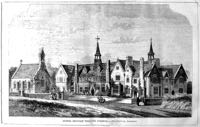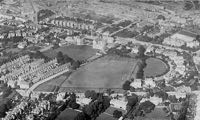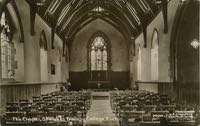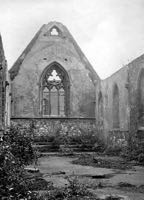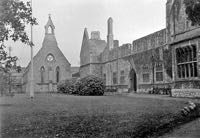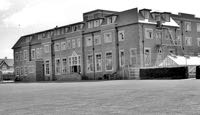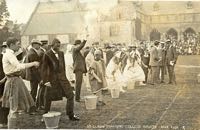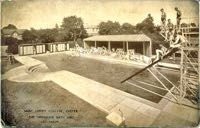
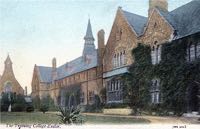 St Luke's Teacher Training College, Heavitree Road
St Luke's Teacher Training College, Heavitree Road
Page updated 30th May 2018
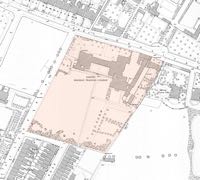 Now part of the
University of Exeter, St Luke's
College started life in 1839 as a teacher training college in the
Cathedral Close. It was created after a meeting in the Chapter House
that led to the setting up of a Diocesan Board of Education, that
consisted of 'the Bishop, the Dean and Chapter, and 150 of the
nobility, clergy, and gentry of Devon and Cornwall'. The principal in
1850
was the Rev. George Martin BD, assisted by a master and a mistress.
Now part of the
University of Exeter, St Luke's
College started life in 1839 as a teacher training college in the
Cathedral Close. It was created after a meeting in the Chapter House
that led to the setting up of a Diocesan Board of Education, that
consisted of 'the Bishop, the Dean and Chapter, and 150 of the
nobility, clergy, and gentry of Devon and Cornwall'. The principal in
1850
was the Rev. George Martin BD, assisted by a master and a mistress.
In 1853, John Hayward was commissioned to design purpose built premises for the college. It was complete in 1854 at a cost of £7,000, some of which was funded by the Acland's of Killerton. The training school was opened in its new premises on 18 October 1854, and named the Exeter Diocesan Training School.
Before the chapel was completed in 1863, students would walk to the Cathedral for services. In 1911-12 James Jerman added new buildings and enlarged the chapel.
Again, expansion occurred in 1934 when the first phase of the Haighton block as opened by Dame Violet Wills, who was a generous benefactor of the college. Chemistry and physics labs, lecture rooms, art and handicraft rooms and a swimming pool were also opened during the year. In October 1938, the second phase of Haighton block was opened–it was named after William Richard Haighton, who had left an endowment of £100,000.
Destruction by bombs
The bombing of 1942 badly damaged much of the college, and the attached St Luke's School. Its name was changed to St Luke's Tracing College. It wasn't until about 1950 that work started to repair all the damaged buildings. The chapel was one of the buildings that was gutted in the raid, and it wasn't until 1952 that repair work was complete, and it was rededicated.
Female students were admitted in 1966, when the college was known as St Luke's College, Exeter. It retained a strong Christian ethos as a Church of England foundation.
In 1967, the modern giraffe house dining room and student bedrooms was added.
The University
In 1978 the college became the School of Education, within the University of Exeter. In 1854 the college welcomed 40 students for training, while in the 1990s there were more than 700. The college has welcomed several trainees who were either already well known, or would become well known. Sir Stanley Rous, attended the college in the 1920's where he gained his qualification as a football referee. In 1934 he refereed the FA Cup Final and in 1938 helped rewrite the laws of the game. He was also a founder member of FIFA. Peter Mark Phillips, the son of Princess Anne and Mark Phillips also attended the college, where he excelled at rugby, becoming a world class player.
Exeter University, St Luke's Campus now runs a range of courses in the Graduate School of Education, the School of Sport and Health Sciences and the University of Exeter Medical School.
For more photos of bomb damaged St Luke's see Swansborough Photo Essay
Sources: Wikipedia, Exeter University website, Devon County website, British Newspaper Archives.
│ Top of Page │
